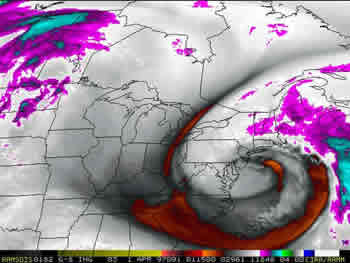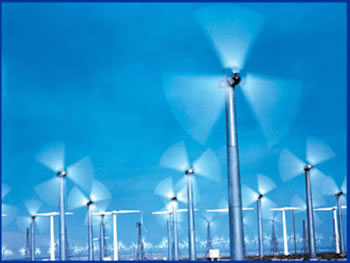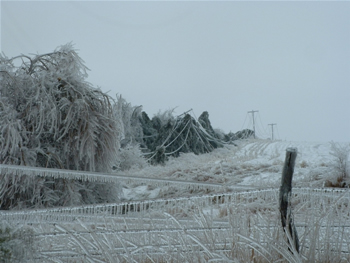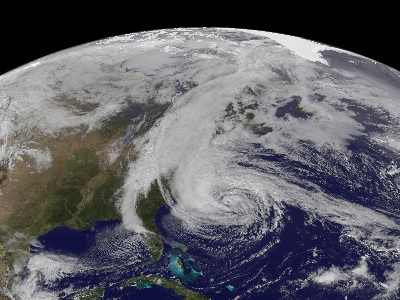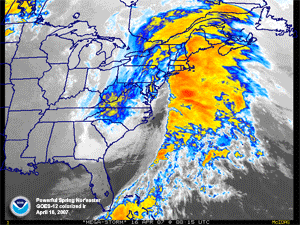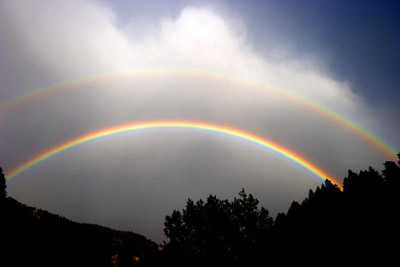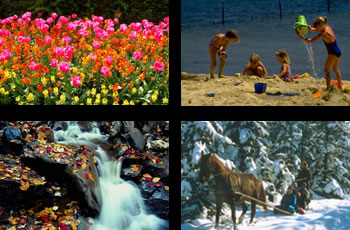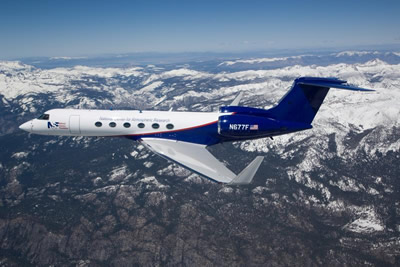Click on image for full size
Courtesy of National Weather Service Forecast Office of Buffalo, NY
Type of Wind: Northeaster
Northeasters, also known as nor’easters, are cyclonic, cold winds that develop in the mid-latitudes. They can bring heavy snow or sleet and gale force winds of 40-55 mph (64.5-88.7 kph). This type of wind is found off of the coast of New England mostly during the winter. In fact, most snowstorms in the eastern United States are called northeasters. The reason for this is the typical direction of the wind, which comes from the northeast. A northeaster forms when a deep low pressure system over the Eastern United States is fed warm moist air as it approaches the Atlantic Ocean. Northeasters usually travel parallel to the coastline. Studies have shown similarities between northeasters and hurricanes. This radar image shows a northeaster traveling up the east coast of the United States.
In February 1969, a northeaster hit New England and 70 inches (1.78 meters) of snow fell in Rumford, Maine. An astonishing 164 inches or almost 14 feet (4.2 meters) of snow fell in Pinkham Notch, NH! Beaches and beach front homes in Wildwood, NJ had extensive damage after 90 mph (145 kph) winds ripped through the area in 1992.
Another cold wind is the Texas norther or blue norther. Northers bring snow and cold wind to the high plains of Texas and the Gulf of Mexico.
Around the world, there are different names for a cold wind. A cold wind in Central America is called a norte. In India, there is a cold dry wind named terrenho. Brazil uses the name sur for a cold wind. A cold northern wind in Spain and Portugal is referred to as a gallego. Greece uses the word vardar for a cold wind.
In high latitudes, there is cold violent wind that suddenly comes down the mountains towards the sea; this wind is called a williwaw. Areas that are most commonly hit with williwaws are the Strait of Magellan, Aleutian Islands, and Alaska. The word williwaw is Native American in origin, and it means a strong erratic gust of wind.


